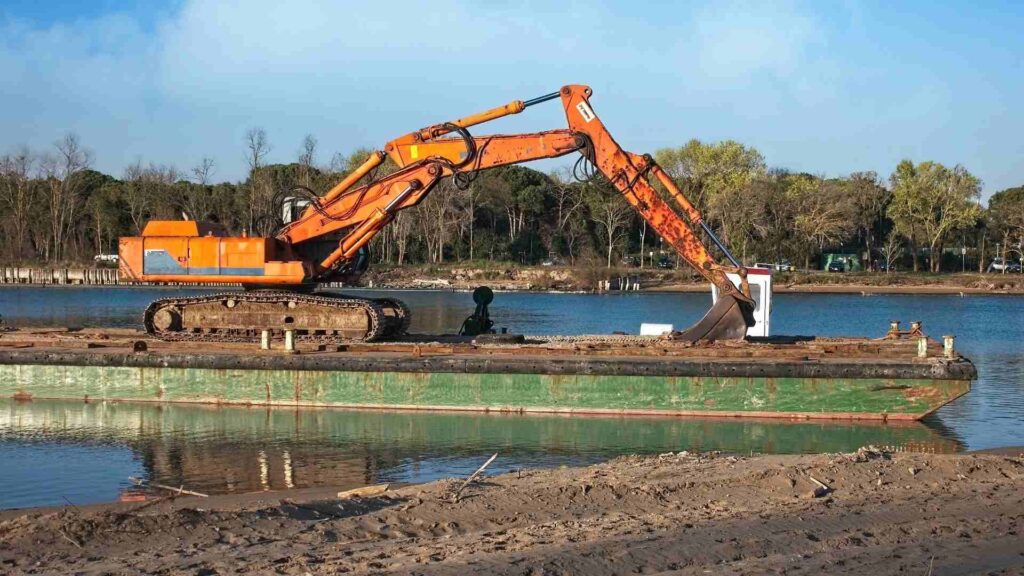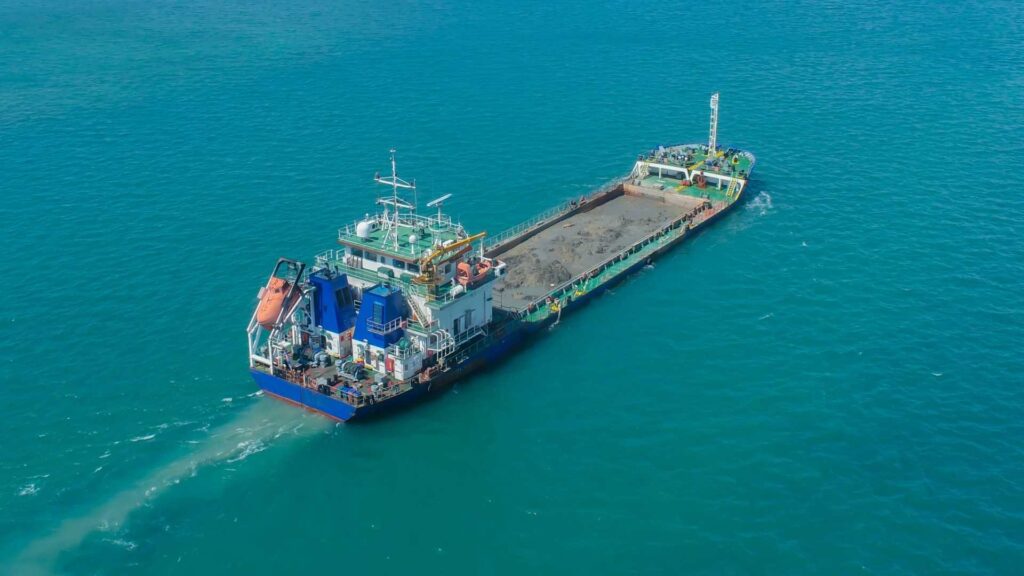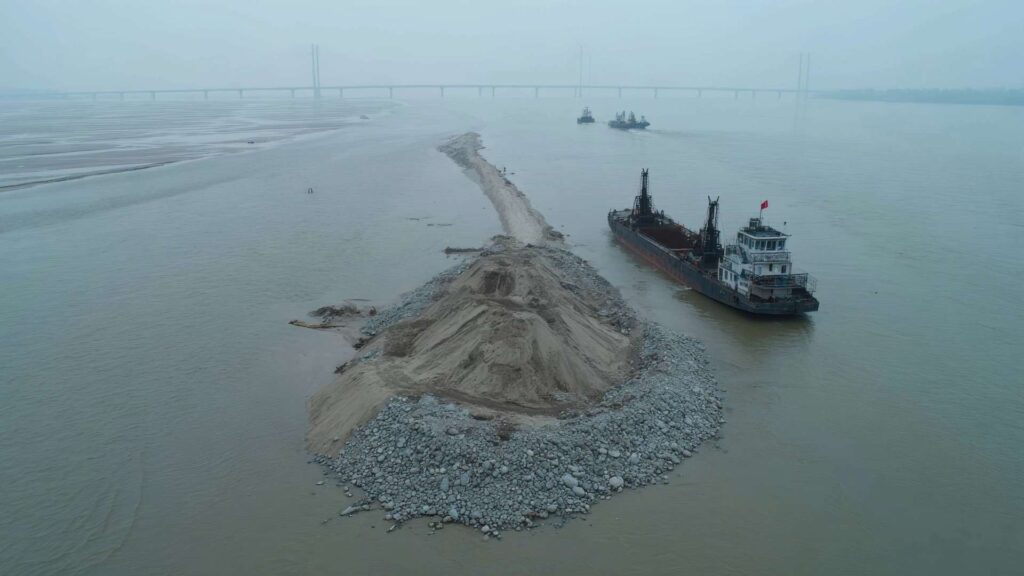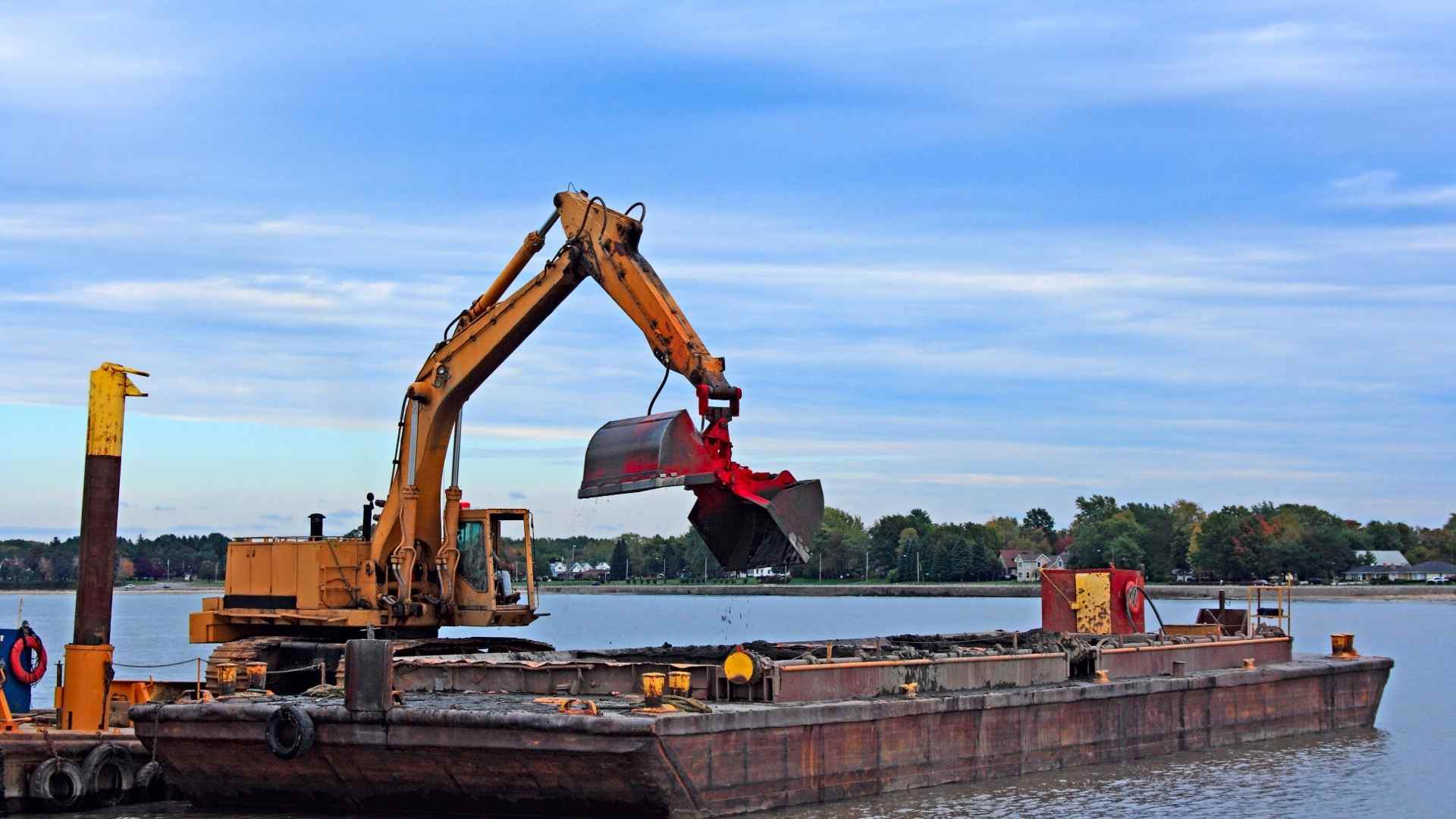What Is Environmental Dredging?
Dredging is a centuries-old practice used to maintain waterways, harbors, and coastal areas. However, in recent decades, an innovative approach has emerged that focuses not only on navigation but also on ecological restoration and public health. This method is known as environmental dredging. Unlike traditional dredging that prioritizes shipping and commercial use, environmental dredging is specifically designed to remove contaminated sediments from rivers, lakes, harbors, and other water bodies. It plays a crucial role in cleaning up polluted ecosystems, reducing risks to human health, and restoring aquatic life.
In this article, we will take a closer look at what environmental dredging is, how it works, why it matters, and examples of environmental dredge projects that are making an impact worldwide.
Understanding Environmental Dredging

Environmental dredging is a targeted process of excavating and removing contaminated sediments that accumulate at the bottom of water bodies. These sediments often contain heavy metals, organic pollutants, industrial chemicals, pesticides, and other hazardous substances that have been released into the environment over decades. If left unchecked, such toxic sediments pose serious risks to fish, aquatic vegetation, drinking water supplies, and recreational activities.
The environmental dredges are the specialized equipment used in this cleanup process. Unlike conventional dredging tools, dredge is designed for precision, low-turbidity excavation, and minimal resuspension of contaminated material. Their goal is not just to move sediments for navigation but to carefully extract and isolate toxic deposits.
Because of its precision, environmental dredging is often used in areas near communities, industrial zones, or ecologically sensitive habitats. Each project requires careful planning, environmental assessments, and the use of advanced technology to ensure long-term benefits.
Why Environmental Dredging Is Important
The significance of environmental dredging goes far beyond sediment removal. It is essentially a public health and ecological protection measure. Contaminated sediments can act like time bombs, slowly releasing toxins into the water column and accumulating in fish tissue. This leads to bioaccumulation, a process where toxins build up in the food chain, posing risks to both wildlife and humans who rely on fish as a food source.
By implementing environmental dredge projects, communities can:
- Restore Water Quality – Removing contaminated sediments directly reduces the source of pollution, improving water clarity, oxygen levels, and overall quality.
- Protect Aquatic Life – Sensitive habitats like wetlands and spawning grounds can thrive again once toxic sediments are removed.
- Support Public Health – Reduced exposure to contaminants lowers risks of cancer, neurological disorders, and other health issues.
- Boost Local Economies – Cleaner waterways enhance tourism, recreation, and sometimes even property values along shorelines.
- Ensure Regulatory Compliance – Many countries have environmental laws that require cleanup of legacy pollution, making environmental dredge projects both a legal and ethical necessity.
How Environmental Dredging Works
An environmental dredge typically uses one of several techniques depending on the site conditions and contamination level. The process is more complex than standard dredging, involving:
- Site Assessment and Sampling – Scientists first analyze sediment composition, contamination levels, and ecological conditions to determine the best dredging method.
- Engineering Design – A customized dredging plan is developed, often including hydraulic dredges, cutter-suction dredges, or mechanical clamshell dredges modified for environmental use.
- Sediment Removal – The dredge carefully excavates sediments while minimizing disturbance to uncontaminated layers. Specialized pumps and containment systems help reduce turbidity.
- Dewatering and Treatment – Removed sediments are brought to the surface, where they are dewatered and treated. Sometimes, contaminated material is transported to hazardous waste landfills or treated on-site.
- Monitoring and Restoration – After dredging, water quality and ecological recovery are monitored. Many environmental dredge projects also include habitat restoration, such as replanting aquatic vegetation.
Challenges of Environmental Dredging
While it is highly beneficial, it is not without challenges. Sediment resuspension, disposal of contaminated material, and high costs can complicate environmental dredge projects. Choosing the right dredge is critical to ensure minimal disruption. Additionally, each project is site-specific, requiring collaboration among engineers, scientists, regulators, and local communities.
Another challenge is balancing cleanup efforts with ecological preservation. Over-dredging can damage habitats, while under-dredging leaves contaminants behind. Therefore, adaptive management and continuous monitoring are vital components of effective environmental dredge projects.

Notable Environmental Dredge Projects
Across the globe, governments and organizations have initiated large-scale environmental dredge projects to address long-standing pollution problems. Some notable examples include:
- Hudson River, New York (USA) – One of the largest environmental dredge projects in history, aimed at removing polychlorinated biphenyls (PCBs) from river sediments. Specialized dredge removed millions of cubic yards of toxic material, significantly reducing PCB levels.
- Great Lakes Remediation (USA & Canada) – Multiple dredging operations have been undertaken to clean up legacy pollution in harbors and connecting channels, restoring both water quality and fisheries.
- Port of Rotterdam (Netherlands) – Here, a dredge was used to remove sediments contaminated with heavy metals and hydrocarbons, ensuring safe navigation while reducing ecological risks.
- Sydney Harbour (Australia) – Targeted environmental dredging addressed sediments contaminated with dioxins, improving conditions for aquatic life and making sections of the harbor safer for recreation.
These environmental dredge projects highlight the global recognition of the need to address contaminated sediments for both ecological health and community well-being.
Understanding Navigational Dredging

Navigational dredging is the traditional and most common form of dredging. Its primary goal is to maintain or deepen shipping channels, harbors, and ports to accommodate commercial, military, or recreational vessels. Sediments naturally accumulate in waterways through erosion, floods, and tidal movements. If left unaddressed, these deposits reduce depth, making navigation unsafe for large ships.
This type of dredging is essential for global trade, fishing industries, and maritime safety. Heavy-duty mechanical dredges, cutter-suction dredges, and hopper dredges are often used for these tasks. The sediments removed are usually not contaminated and may even be reused for beach nourishment, land reclamation, or construction fill.
Key Differences Between Environmental and Navigational Dredging
While both dredging share the same basic process of sediment removal, their purposes, methods, and outcomes differ significantly. Understanding these differences is essential for appreciating how each contributes to waterway management, commerce, and environmental health.
1. Primary Objectives
The fundamental goal sets these two practices apart. Navigational dredging ensures that waterways such as harbors, rivers, and shipping channels remain deep enough for vessels to move safely. It is critical for global trade and transportation, preventing disruptions in shipping routes and ensuring the smooth flow of goods.
In contrast, environmental dredging is not concerned with vessel movement but with ecological restoration and public safety. Its primary purpose is to remove contaminated sediments that have accumulated over decades, often as a result of industrial discharges or urban runoff. By doing so, it helps restore natural balance and reduce risks to human and ecosystem health.
2. Type of Sediments
The material targeted in each type of dredging also differs. Navigational dredging generally deals with naturally accumulated sediments such as sand, silt, and gravel. These materials settle over time and simply make waterways shallower.
Environmental dredging, however, addresses more dangerous deposits. Sediments in these projects may contain toxins like heavy metals, PCBs, or chemical residues that pose long-term risks. Unlike simple sediment buildup, these materials demand careful handling and disposal.
3. Equipment Used
Because their goals differ, the equipment used also varies. Navigational dredging typically employs high-capacity dredges designed for speed and efficiency, moving massive amounts of material quickly to maintain shipping lanes.
Environmental dredging requires a more delicate approach. Specialized equipment minimizes turbidity, controls the spread of contaminants, and ensures precise removal. These dredges are often fitted with advanced monitoring systems and containment measures to prevent harmful substances from re-entering the water.
4. End Results
The outcomes highlight the contrasting benefits. Navigational dredging improves safety, supports commerce, and keeps transportation routes open. It ensures ports remain competitive and capable of handling global shipping demands.
Environmental dredge projects, by comparison, enhance ecosystem health, restore biodiversity, and protect communities. The result is cleaner water, healthier habitats, and reduced exposure to environmental hazards.
5. Regulatory Oversight
Finally, oversight reflects their unique challenges. Navigational dredging is largely regulated for safety and operational efficiency, with guidelines focused on ensuring vessels can move without obstruction.
Environmental dredging, however, requires extensive environmental assessments, monitoring, and community involvement. Projects often undergo years of study and planning to ensure contamination is handled safely and ecosystems are protected.
Why Environmental Dredging Matters
The importance of dredging lies in its long-term benefits. Contaminated sediments often release toxins slowly into water, affecting fish, birds, and humans. Left untouched, these sediments can lead to bioaccumulation, where dangerous chemicals concentrate in the food chain.
By carrying out environmental dredge projects, communities can:
- Restore clean water for drinking and recreation.
- Revive aquatic habitats critical for fish and wildlife.
- Reduce human exposure to harmful contaminants.
- Meet environmental regulations and avoid costly penalties.
- Improve quality of life and enhance local economies through safe tourism and fishing.
Why Navigational Dredging Still Remains Important

While environmental dredging addresses pollution, navigational dredging is vital for commerce. Ports are gateways of global trade, and without constant dredging, ships could not transport goods efficiently. For instance, ports along the Mississippi River and the Suez Canal rely heavily on navigational dredging to keep trade flowing.
This does not mean one is more important than the other—rather, both types serve different but complementary purposes in water management.
Techniques Used in Environmental Dredging
It is a highly specialized process that differs significantly from traditional navigational dredging. Its primary goal is to remove contaminated sediments safely while minimizing disruption to surrounding ecosystems. To achieve this, dredges rely on a combination of precision equipment, monitoring, and containment strategies.
1. Hydraulic Dredges with Precise Suction
Hydraulic dredges are among the most common tools in environmental dredging projects. Unlike traditional dredges used for clearing harbors, these are equipped with precision suction systems. They remove contaminated sediment carefully, reducing water turbulence and maintaining low turbidity levels. By limiting the resuspension of sediment, hydraulic dredges prevent pollutants from spreading downstream, protecting water quality and aquatic life.
2. Mechanical Clamshell Dredges Modified for Environmental Use
Mechanical clamshell dredges, traditionally used in large-scale sediment removal, have been adapted for environmental applications. These dredges are modified to handle contaminated material with minimal sediment resuspension. The clamshell bucket carefully scoops sediment from the river or lakebed, reducing the likelihood of disturbing surrounding areas. This method is particularly effective for removing compacted or heavily contaminated layers of sediment that hydraulic systems might struggle to extract.
3. Real-Time Monitoring Systems
Environmental dredging projects often employ sophisticated real-time monitoring systems. Sensors track water quality indicators such as turbidity, dissolved oxygen, and contaminant levels throughout the dredging process. This continuous monitoring allows crews to adjust techniques on the fly, ensuring that pollutants are contained and that the surrounding environment remains safe. It also provides regulatory agencies with essential data to confirm that dredging operations comply with environmental standards.
4. Containment Barriers
Containment barriers, sometimes called silt curtains, are a critical feature of environmental dredging. These barriers encircle the dredging site, preventing suspended sediment or contaminants from dispersing into open water. By isolating the work area, containment barriers protect aquatic habitats, reduce downstream pollution, and ensure that dredged material can be safely collected and transported for treatment or disposal.
The Balance Between Both Practices
The discussion around dredging often centers on two key practices: environmental dredging and navigational dredging. While some may assume these approaches compete, the reality is quite the opposite. Each serves a distinct purpose, and both are essential for maintaining healthy waterways and supporting human activity.
Navigational dredging focuses on keeping channels, ports, and harbors accessible for vessels. It is indispensable for global trade and shipping, allowing goods to move efficiently and safely across the world. Without regular navigational dredging, sediment buildup could restrict vessel access, disrupt supply chains, and impact local and international economies.
Meanwhile, environmental dredging addresses ecological and public health concerns. Over time, waterways can accumulate toxic sediments from industrial activity, agricultural runoff, or urban development. Environmental dredge projects remove these pollutants, restoring aquatic habitats, protecting fish and wildlife, and ensuring water quality for surrounding communities. Advanced environmental dredging technologies now make this process safer, more precise, and less disruptive to the surrounding ecosystem.
Increasingly, policymakers, engineers, and environmental managers are exploring integrated dredging strategies that combine both approaches. A practical example is a harbor project where environmental dredging is conducted first to remove contaminated sediments, followed by navigational dredging to deepen channels and expand shipping capacity. This coordinated approach ensures that both ecological restoration and economic functionality are achieved simultaneously, rather than in isolation.
The balance between environmental and navigational dredging highlights the evolving role of dredging in modern waterway management. Rather than viewing these methods as competing priorities, stakeholders are recognizing the value of using both strategically. Together, they provide a framework for maintaining safe, efficient waterways while restoring and protecting the health of aquatic ecosystems for the benefit of communities and commerce alike.
The Future of Environmental Dredging and Navigational Dredging
Though they share the same core process of sediment removal, both differ greatly in purpose, execution, and outcomes. One ensures global commerce continues without interruption, while the other safeguards ecosystems and human health from long-standing contamination.
With advanced dredge technologies and the rise of large-scale dredge projects, communities worldwide are witnessing the transformative power of dredging done for restoration. At the same time, navigational dredging ensures safe and efficient transport of goods that keep economies running.
Together, these two approaches highlight the importance of dredging not just as a technical operation, but as a vital practice for balancing trade, safety, and environmental sustainability.
At pdwire, we put forth daily dredging news and updates regarding dredging from around the world.
